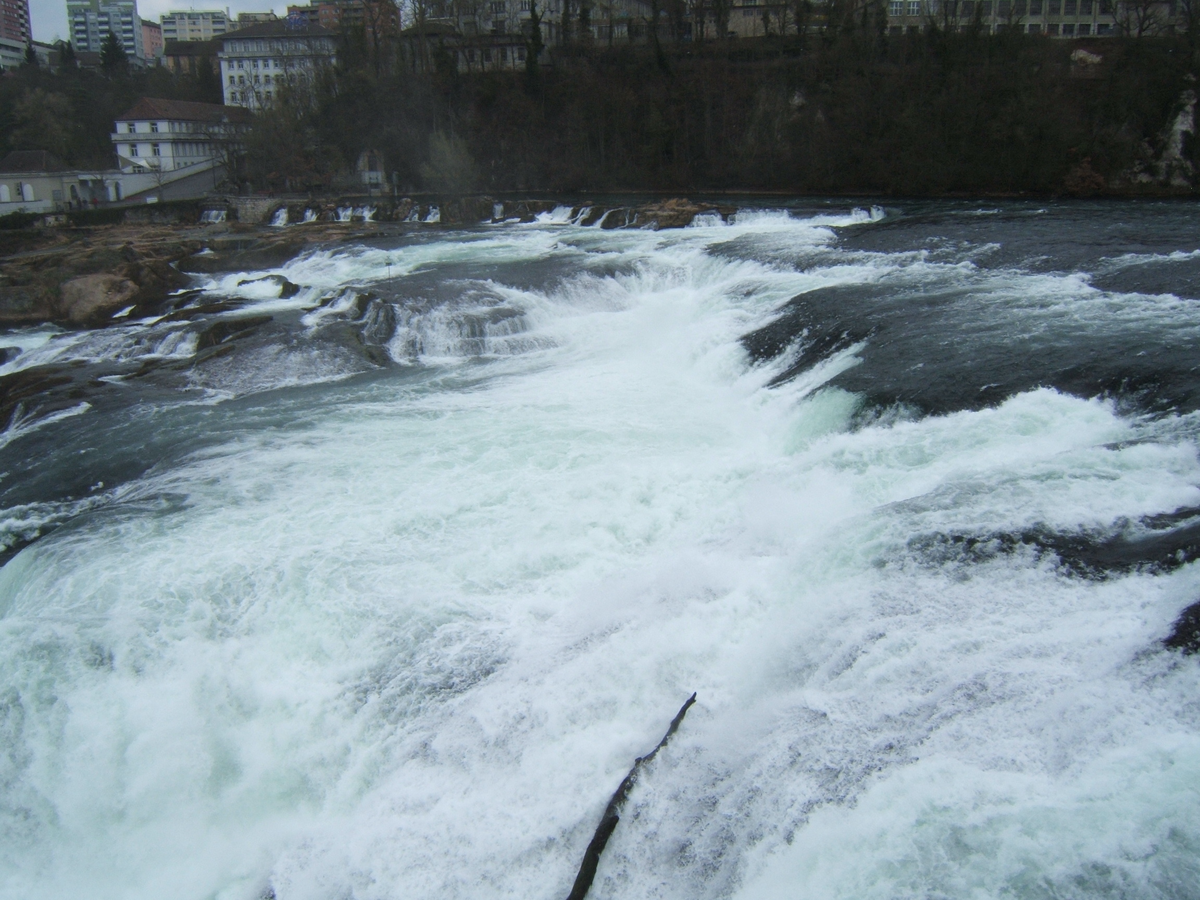Droughts in the Swiss Alps: At the transition from the wet north to the dry south
July 30, 2024

Photo: Waterfall in the Swiss Rhine near Schaffhausen
What is a ‘drought’?
Droughts can take different forms. There is not one type of drought, there are three. First, there are meteorological droughts due to precipitation deficits. Second, too little precipitation and too much evaporation may cause soil moisture deficits and thus agricultural or soil moisture droughts. Third, rivers may run out of water, leading to hydrological droughts. In fact, there is a fourth type of drought: socio-economic droughts, including impacts resulting from all these drought types.
Minor changes, on an annual basis
On an annual basis, future projections on droughts are not that dramatic for Switzerland. Projections of future changes in annual precipitation and annual streamflow discharge indicate only minor changes for both. This is mainly because of two reasons. First, the Alps are a “water tower” and continue to supply water throughout the summer season. Second, the Alps divide Europe in a northern part with projected (winter) wetting trends, and a southern part with drying trends, with Switzerland being part of the ‘Alpine Divide’ in the middle and thus without strong wetting or drying this century.
A challenge to Swiss water management
On a seasonal scale, projected changes in Switzerland are more pronounced, however. Without mitigating climate change, also in Switzerland the summers would get much dryer with strong negative impacts on agriculture and river discharge. The situation may become more complicated when different types of droughts – compound droughts – occur at the same time. This poses a challenge to the water management in Switzerland because the water abstraction from rivers is limited during low-flow periods, and farmers need water for irrigation during agricultural drought conditions.
The need to mitigate climate change
Model projections of Switzerland’s droughts this century indicate that if global warming were to continue without mitigation, the number of compound droughts would strongly increase. These events – with little water in the soil, a high need for agricultural irrigation and low river discharge – would occur on average once per summer in river catchments on the north side of the Alps and once every one to two summer seasons on the south side of the Alps. These projections also show the importance of mitigating global warming: strong mitigation reduces the number of compound drought days by the end of this century by 50% to 55% north of the Alps and by up to 75% in the Southern Alps.
Adaptation cannot solve all our problems if global warming continues at its current rate. We also need mitigation to ensure that adaptation is successful in avoiding severe impacts.
Source: Von Matt et al., 2024. Natural Hazards Earth System Sciences 24: 1975–2001.








